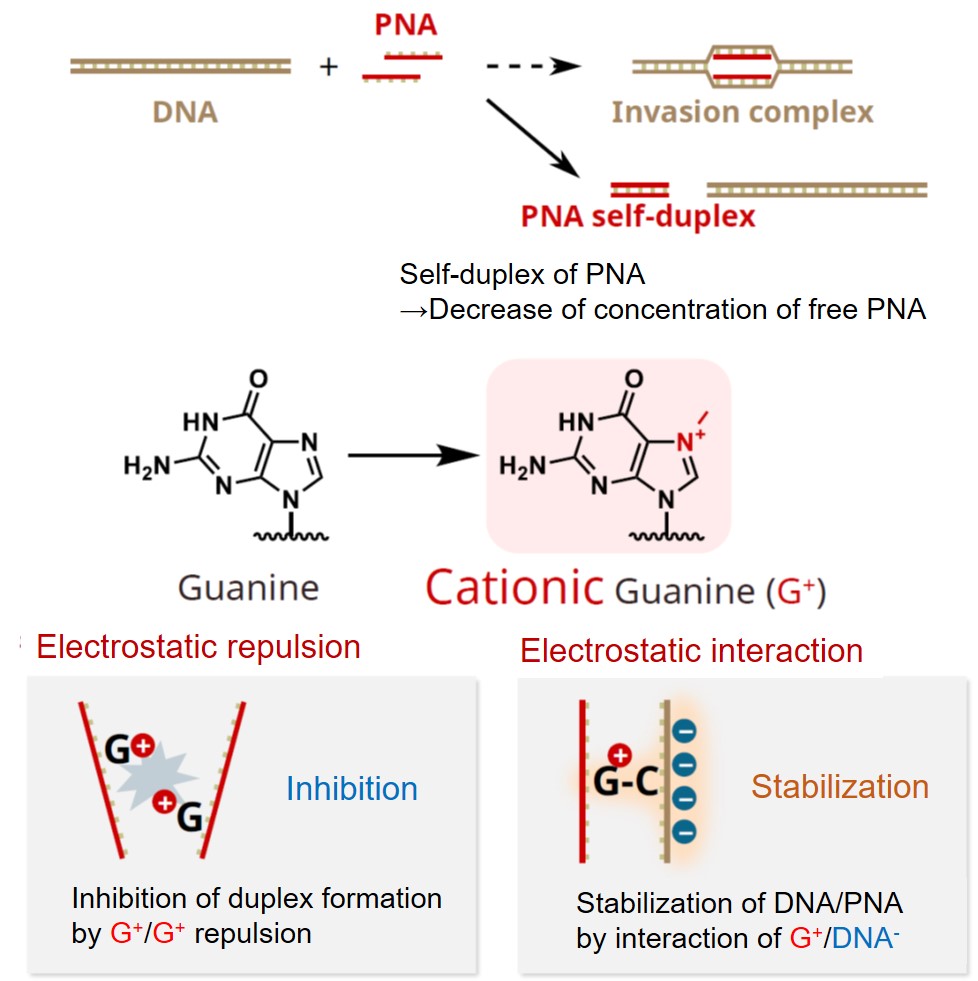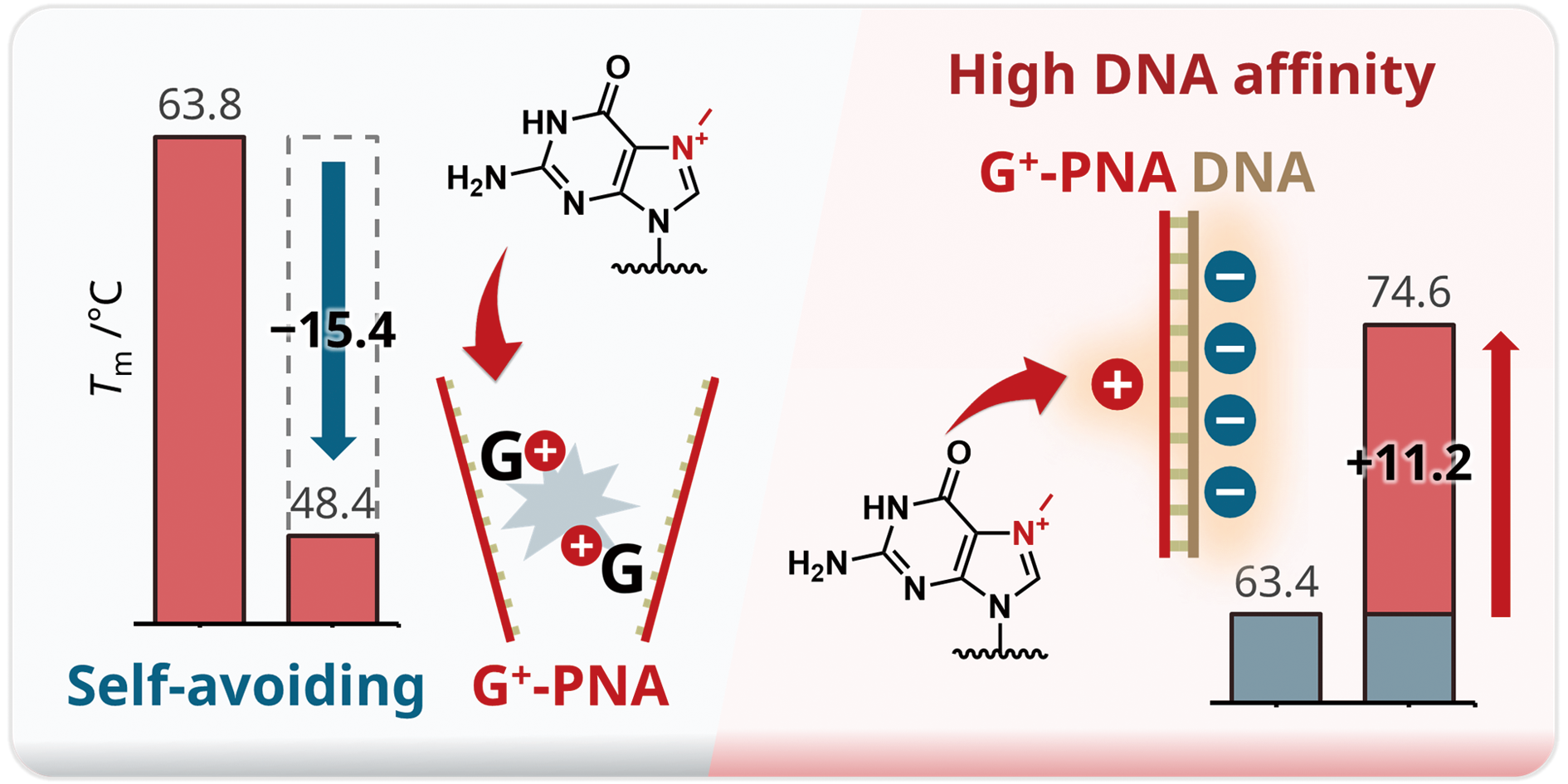Research Introduction
Gene regulation by peptide nucleic acid (PNA)
Episode 2: Cationic guanine-introduced PNA (masaPNA) by methylation of guanine
Although we have succeeded in improving the invasion efficiency of PNA by strengthening the PNA/DNA interaction through the introduction of a ruthenium complex (Episode 1: Improvement of PNA invasion efficiency by conjugation with ruthenium complexes), we are also attempting to improve the invasion efficiency of PNA into DNA by weakening the PNA/PNA interaction. Unlike DNA, the backbone of PNA does not have a negative charge, and electrostatic repulsion due to negative charges between DNA/DNA does not occur. Thus, PNA/DNA can interact more strongly than DNA/DNA. On the other hand, the interaction between PNA/PNA is even stronger, which is a major hindrance to the invasion of DNA by PNA.
Therefore, in a one-step chemical reaction, we developed cationic guanine (G+) by methylating guanine (G), one of the natural nucleic acid bases. By introducing G+ to both of the two complementary PNAs (named methyl-adducted self-avoiding PNA (masaPNA) by Dr. Masashi Hibino (PhD graduate in 2019)), destabilization occurs between PNA/PNA due to electrostatic repulsion caused by G+. Furthermore, during invasion with DNA, the negative charge of DNA and G+ of PNA electrostatically attract each other, strengthening the PNA/DNA interaction, and we succeeded in significantly improving the invasion efficiency of PNA.

Please refer to this paper for details.
- M. Hibino, Y. Aiba, O. Shoji "Cationic Guanine: Positively Charged Nucleobase with Improved DNA Affinity Inhibits Self-Duplex Formation" , Chem. Commun., 46, 2546-2549(2020).
https://doi.org/10.1039/D0CC00169D

Episode 3: Improved invasion efficiency of PNA by linking nuclear localization signal peptide (NLS)


